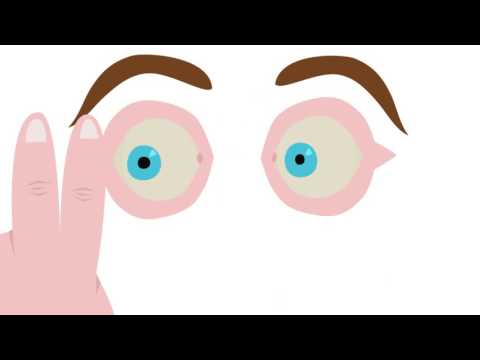A lot has been said about Eye Movement Desensitization and Reprocessing (EMDR) as an effective treatment for trauma, but how does EMDR actually work in practice? How is the therapy delivered and what are the mechanics of an EMDR therapy session?
The EMDR process is much more than simply eye movements. The eye movements comprise only a small part of a larger process that has been broadly broken up into eight different phases by EMDR experts such as Francine Shapiro. This eight step process ensures that trauma and other unpleasant memories are properly identified and fully processed and that healthier beliefs are installed in place of the re-worked trauma. We will summarise the eight steps in brief and then go through each one in more detail below.
Contents
Here are the 8 phases of EMDR:
- Client History – Identify target memories.
- Preparation – Prepare the client appropriately for the therapy.
- Assessment – Fully assess and evaluate target memories, feelings, beliefs etc.
- Desensitization – Use eye movements or other forms of bilateral simulation to process memories.
- Installation – Install positive beliefs about self to replace negative beliefs and affects associated with memories.
- Body Scan – Eliminate any remaining physiological symptoms with further bilateral stimulation.
- Closure – Return client to safe calm equilibrium as session ends.
- Re-evaluation – Check that all aspects of memory have been fully processed.
Francine Shapiro Summarizes the 8 Steps of EMDR
Step 1 – Client History
The first step of treatment is for the therapist to identify what kind of trauma or unpleasant experiences the client wants treating from the past. They will attempt to draw up a full clinical history of the client, from early childhood, family of origin and upbringing, and significant trauma or life events which have had a major impact on the client and continue to be a source of pain to them.
Negative experiences can run along a very broad spectrum from general unpleasant life experiences and hardships to extreme trauma. They can also be from recently or from a long time ago. The therapist and client need to build up a list of key experiences. Here are just some examples here:
- Humiliation by peers or parents
- Bullying
- Ridicule
- Rejection
- Unpleasant separations or divorces
- Extreme abuse and anger from parents
- Traumatic war and combat experiences
- Sexual abuse
- Near death experiences like car crashes
- Any other significantly negative or traumatic life experience
The main goal is to identify experiences from the past which lead the client to have negative beliefs about themself or the world. It is an unfortunate quirk of humans that when we experience something negative in our lives, we often tack on to our memory of the experience a negative belief about ourselves. This could be many different things; some examples are:
- I’m not good enough
- I’m a failure/loser
- I can’t trust other people
- The world is dangerous/horrible
- I’m not safe
- I’m not loved
Whilst going back over all this stuff may not seem pleasant at the time, in EMDR therapy the process pays dividends many times over because of the generalized healing effect EMDR has when done properly. What we mean by this is that working though one particular experience in a certain class, such as humiliation, will have a flow-on generalising healing effect to all other experiences of humiliation the client has suffered.
This is an immensely beneficial aspect of EMDR therapy and one of the main reasons we decided to set up this blog – it is an intrinsically positive and “glass half full” therapy in that you don’t have to work on every single negative experience. You just need to work on the key standout experiences of each class of experience such as humiliation, bullying etc. and this will have a flow on healing affect to all other similar experiences.
This benefit of EMDR therapy cannot be over-emphasized as it makes EMDR a very efficient therapy, saving time and often precious money. This is especially important considering that many people suffering from trauma often spend months or years and thousands of dollars on conventional talk therapy and sometimes struggle to make significant progress. EMDR has been repeatedly proven to be an effective and comparatively rapid treatment for Trauma, and this “Ripple Effect” is one of the main reasons why.

The “Ripple Effect” that EMDR has is a hugely positive factor of treatment. Working with one particular bad experience will, when successful, have a beneficial flow on effect to all other individual experiences within that class of experience (eg. humiliation, ridicule etc).
Step 2 – Preparation
Once a list of key negative experiences and associated beliefs has been drawn up, the therapist has to adequately prepare the client for the EMDR process. This basically means that they need to encourage the client to be present and mindful during the process and not be “afraid of the fear” of confronting negative memories and beliefs, as Shapiro puts it in the video above.
EMDR is not necessarily a pleasant experience while undergoing it, but it is most definitely a therapeutic experience when successful. Therefore it is important that the client has a realistic view of the process; unpleasant things will come up but it is important to remain present and “stay with” whatever comes up to allow the processing to take place. Most people who undertake EMDR manage to do this just fine.
This is where the practice of Mindfulness that we also cover on this blog can come into play, as staying present with emotions and sensations is the very essence of mindfulness. So whilst mindfulness is not the focus of EMDR, there is still a mindfulness component contained within in, especially in this second step of preparation.
Step 3 – Assessment
In this step the client actually begins to target a specific memory. The therapist may build up a full image of the target by asking questions about the incident, such as what happened, when, where, and also what negative beliefs about themself that they hold in relation to this memory. The individual components of the target image are brought out.
This is basically the start of the therapist helping the client to “tap in” neurologically to the unpleasant memory and any associated negative beliefs. The client is also asked to scale the memory on a 1-10 scale of how distressful it is. They are also asked what negative beliefs they think about themselves when they tap in to this experience, such as “I’m not good enough” and the others listed above.
Also whilst it is important at this stage to identify any negative self beliefs associated with memories, it is also important to have replacement positive beliefs about self ready for replacing the associated negative beliefs once the processing is complete. We cover this more in more detail in Step 5.
Step 4 – Desensitization
This is the part where the processing of the memory and negative beliefs actually takes place. The therapist will use some form of Bilateral Stimulation (BLS) to stimulate the mind/brain to process whatever trauma is currently being held in the conscious mind. This usually involves instructing the client to follow hand movements back and forward, though it can also involve other forms of BLS such as tapping on the skin.
The therapist will encourage the client to keep focused on their internal experience of the incident, but also to keep following their hand as it moves backwards and forwards across their field of vision. In other words, they encourage a client to maintain a dual focus of attention on both their inner experience and their outer experience in terms of observing the stimulus of the hand moving backwards and forwards.
The therapist will continue to do this to allow the mind to process the memory, asking the client to re-scale the intensity of their inner experience of the memory from 1-10 as they go along. When conducted correctly EMDR most often significantly reduces the intensity of the unpleasant memory for the client.
The theapist may have to “circle back” to the original memory multiple times depending on how deep or complex the trauma is, but the process remains the same. The therapist will keep asking the client to hold the memory and associated affects in mind whilst also following their hands backwards and forwards.
They will keep doing this until the client is able to grade the memory as either a much lower level of intensity on the 1-10 scale, or even as a zero – the memory no longer bothers them. And this is the ideal goal of EMDR; to get the client from a point where they grade the memory as a say 8 or 9 out of ten for intensity and unpleasantness, right down to a 1 or 2 out of ten, or ideally even a zero.
They will also ask the client if any other memories come up during this initial reprocessing, and also what feelings and beliefs are associated with them. They will also perform the BLS hand movements on these additional memories to process them. The BLS combined with a dual focus of attention serves to “blur” any negative memories for the client, making them seem less vivid and intense and more distant and neutral. The “sting” is taken out of them.

EMDR is the number one recommended therapeutic method for treating trauma and all the negative consequences and beliefs about self that it can bring
Step 5 – Installation
In this step the therapist and client will take steps to fully install the positive cognition or belief of self into the client. This is where the client takes the replacement positive beliefs they came up with in step 3 and uses them to replace the negative cognition or view of self that was formerly held with the unprocessed memory.
Now the BLS hand movements have processed the unpleasant memory and it’s associated affects and negative views of self, it is possible to place newer, more adaptive and positive beliefs of self such as “I am good”, “I am safe”, “I am worthy” and so on in place of the negative ones. This is the culmination of the client fully “letting go” of and making peace with the original unpleasant incident and any negativity associated with it.
The EMDR process ensures that the original event is not only processed and “blurred” or lessened in emotional intensity, but also that newer, more functional beliefs of self are thoroughly installed into the the person’s psyche to exist in place of or at least alongside the original troublesome memory and affects.
Step 6 – Body Scan
In this step there is again an aspect of Mindfulness, as the therapist will encourage the client to attentively scan their body and notice any lingering physiological sensations still present in the body related to the memory of the original incident. It is often the case that trauma remains physiologically stored in the body and often manifests in various physical sensations like numbness, tingling, heat rushes etc.
The therapist will perform further bilateral stimulation hand movements to ensure any of these lingering physiological responses are themselves fully processed. The aim is to make sure the “sting” is taken out of the original trauma in all senses, mental, emotional and physical, with any physical manifestations of the unpleasant memory also fully processed and removed.
Step 7 – Closure
This step is most relevant if the session is about to end without the memory being fully processed. Due to the often complex nature of trauma and different between individuals, there can be an enormous variety in the amount of time it takes to fully process a memory to resolution in EMDR. As Dr. James Alexander explains in the embedded video below, it is in some cases possible to process several unpleasant memories in one session; equally in more difficult cases it can take several sessions just to fully process one memory.
It may therefore be that the therapist and client approach the end of the session without being able to fully process a memory. In this case they will follow a pre-planned series of exercises to return them to a calm equilibrium so that even if the memory is not fully processed, they do not leave the session in a more distressed state than when they entered. They can then return to continue processing the memory in the next session.
These exercises often involve some kind of guided imagery in order to return the client to a sense of calm and peace. In doing this it is ensured that the client can still return to normal life in a somewhat calm state so that they can still continue to do their job, take care of their family, or whatever other responsibilities they have and only deal with the trauma in the safe confines of a therapeutic session.
Step 8 – Re-evaluation
This often happens at the next session after which a memory has been processed to resolution. The therapist will check in with the client to make sure that all negative affect and cognition has been been removed from the initial memory. On other words, if they processed an unpleasant event in the previous session they want to make sure it has stayed processed.
They will make sure that all negativity has been removed from their memory of the event, but also that the positive self beliefs they installed in place of the negative ones are still present. The therapist will make sure that the client regards the event itself in either positive and neutral terms, and any views of self the client now holds in relation to the memory are only positive ones. This is a sign that the EMDR process has been successful for that particular memory.
If some negative emotions and views of self have returned or are still present in the client’s memory of the incident, then it is a sign that further work is needed to make sure the event is fully processed and healthier adapter beliefs are fully installed on a more permanent level. The therapist will cycle back to the steps above if needed to make sure the memory is reprocessed to full resolution.
Dr. James Alexander explains how the EMDR process works
#
Summary
So you can hopefully see from the steps above that EMDR involves far more than just eye movements. It involves the implementation of a fully planned and tested procedure to make sure not only that a memory is fully processed using the hand movements or other bilateral stimulation, but also that newer, healthier and more adaptive beliefs are installed in place of the negative ones that were initially formed when the event happened.
There are also safeguards built into the process which ensure that the client is not overwhelmed by any emotions that come up, and also that they can be brought back to a sufficiently calm state at the end of a session to be able to continue with their normal lives. The process will also have built in safeguards to allow the client to stop the process at any time should they become overwhelmed; see the embedded talk by James Alexander for more explanation of this.
It is therefore important to stress that eye movements on their own will likely not get the job done in fully processing trauma. There is much more to the process which is why it is important to seek out the help of a qualified EMDR therapist when dealing with any serious trauma. That way you can be guided through the full process of EMDR to make sure unpleasant memories and life events are systematically processed to adaptive resolution and new healthier beliefs are installed in their place.
Having said that, when conducted correctly in a controlled environment, EMDR has proven to be one of the most effective therapeutic methods for dealing with trauma, with numerous studies supporting it’s effectiveness. It is also a considered an “A” Level treatment for trauma recommended by the World Health Organisation. It’s effectiveness in treating trauma is now well established.
The vast majority of people that I’ve ever done (EMDR) with wind up getting somewhere a whole lot better as a result. It’s the most effective thing I’ve ever seen in psychology and one of the few things I feel really confident about introducing people to.
Dr. James Alexander
If you think you may benefit from EMDR then click here for resources to find a therapist in your country and region.






